Physical Address
304 North Cardinal St.
Dorchester Center, MA 02124
Physical Address
304 North Cardinal St.
Dorchester Center, MA 02124
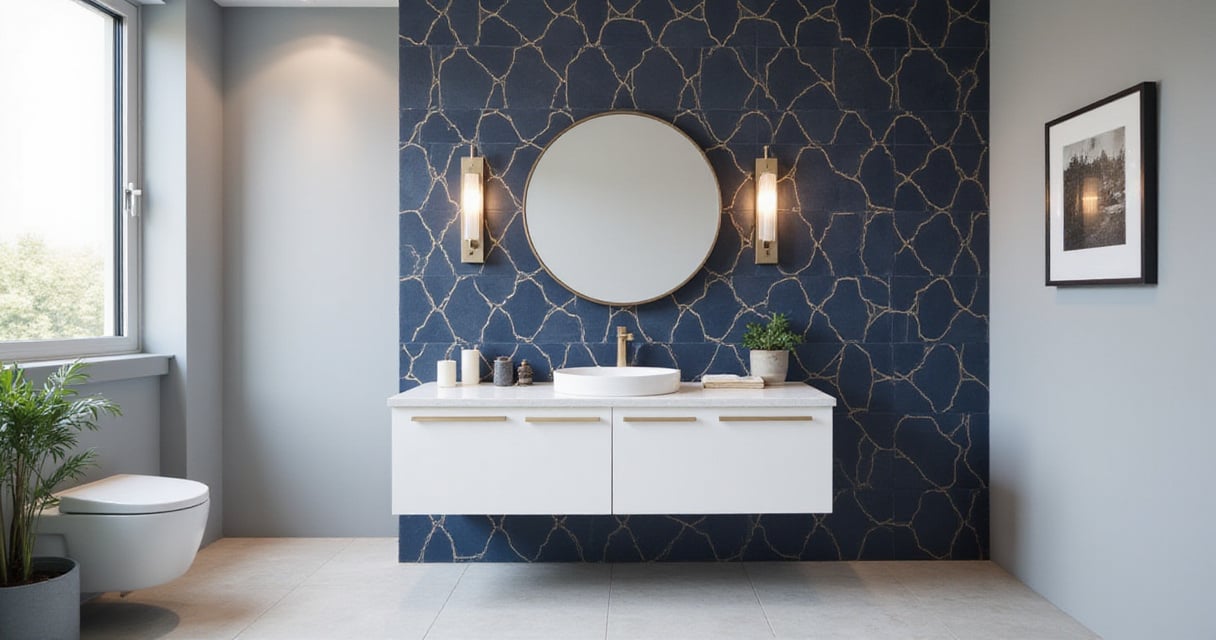
Discover 22 bathroom interior design ideas perfect for families with children. From practical storage solutions to playful accents, learn how to create a space that grows with your family while maintaining style and functionality.
Of all the rooms in a home, the bathroom is where the beautiful chaos of family life is on full display. It’s the starting block for hurried mornings, the splash zone for bubbly bath times, and the quiet backdrop for those sleepy, end-of-day wind-downs. As someone who has spent years at the intersection of early childhood education and design, I’ve seen firsthand how this hardworking space can be so much more than just tile and porcelain. It can be a place of connection, learning, and surprising style.
So, whether you’re staring at a full-gut renovation or just dreaming of a refresh, let’s talk about creating a bathroom that truly works for your family. This isn’t about hiding the kid stuff or sacrificing your aesthetic. It’s about smart, thoughtful design that supports your child’s development, makes your life a little easier, and yes, still feels like a beautiful escape for you.
A “statement wall” sounds like a big design commitment, but I prefer to think of it as giving one wall a special job to do. Its job is to capture the imagination. I once worked with a family whose bathroom had a wall of deep blue, crackle-glaze tiles behind the tub. We found a few accent tiles with tiny fish and scattered them about. The tub became “the deep sea,” and their son’s nightly mission was to make his toothbrush “swim” to a new fish. Tooth-brushing resistance? Gone.
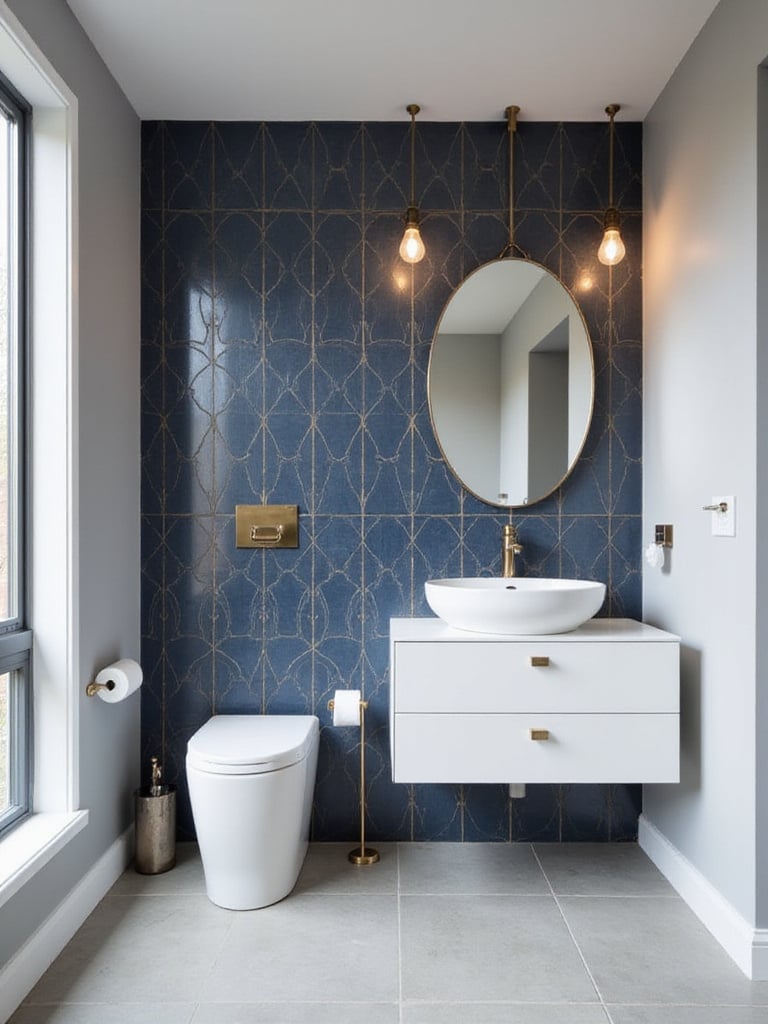
That’s what a great wall can do. Forget sterile white. Think waterproof wallpaper with a whimsical forest scene, a bold geometric tile pattern, or even a section of chalkboard paint for some pre-bath scribbles. The best spot is usually the one you see first or the wall behind the tub. Just be sure to place the most interesting details at your child’s eye level. It invites them into the story.
We know nature is calming for kids and grown-ups, so why not bring that feeling into the bathroom? Swapping a cold plastic bath mat for a warm, teak one or adding a few smooth river stones to a shelf creates an immediate sensory shift. These materials don’t just look good; they connect our kids to the natural world, even during a routine as simple as washing their hands.

I’ve noticed that parents worry about the practicality of materials like wood in a damp space. But here’s the thing: many natural materials are surprisingly resilient. Teak and bamboo are naturally water-resistant, and I find that wooden bath toys, when aired out properly, often fend off mildew better than their plastic counterparts. It’s about choosing the right natural materials to create a grounding little retreat for everyone.
One harsh overhead light is a recipe for a sterile, unwelcoming bathroom. The secret to a truly functional family space is layered lighting. Think of it like dressing for the weather—you need different layers for different situations. You need bright, clear task lighting over the vanity for brushing teeth and finding stray splinters. You want softer, ambient light for a general glow. And then, the magic ingredient: accent lighting.

For kids, this is where it gets fun and incredibly practical. A dimmable switch is non-negotiable for me. It allows you to have bright light for “get ready for school!” energy and a super-soft glow for a calming pre-bedtime bath. Low-level, motion-sensor night lights are a game-changer for midnight bathroom trips, helping little ones feel independent without a blast of light that fully wakes them up. Good lighting supports your family’s natural rhythms, and that’s a cornerstone of developmental design.
The vanity is the workhorse of the bathroom, and for families, it has to do a lot. When choosing one, think about the next five years, not just today. A standard-height vanity with a sturdy, beautiful step stool is a classic solution. But now you can also find amazing dual-height designs, or even vanities with a pull-out step integrated right into the toe-kick. It’s genius.
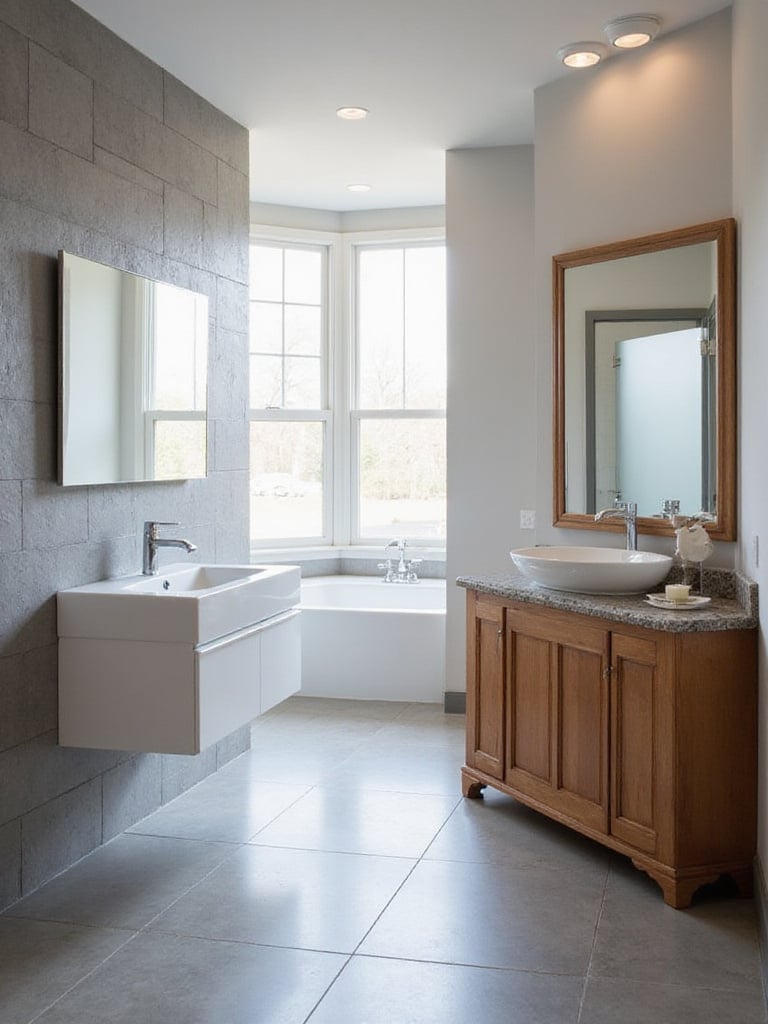
And please, for the sake of your sanity and your child’s fingers, insist on soft-close drawers. Storage is also key. I like a mix of deep drawers for organizing small things (think color-coded bins for each kid’s toothbrush and hair ties) and cabinets for bulkier items. Leaving an open shelf at the bottom is one of my favorite tricks—it’s the perfect spot for wire or wicker baskets to hold bath toys, letting them air dry in plain sight without looking messy.
Ah, bathroom storage. The final frontier. It’s a constant battle between keeping things accessible for the kids and keeping dangerous items safely out of reach. It requires thinking vertically and creatively. Mesh bags on suction cups are a classic for a reason—they stick to the tile and let toys drip dry, preventing that dreaded pink slime. But think beyond that.
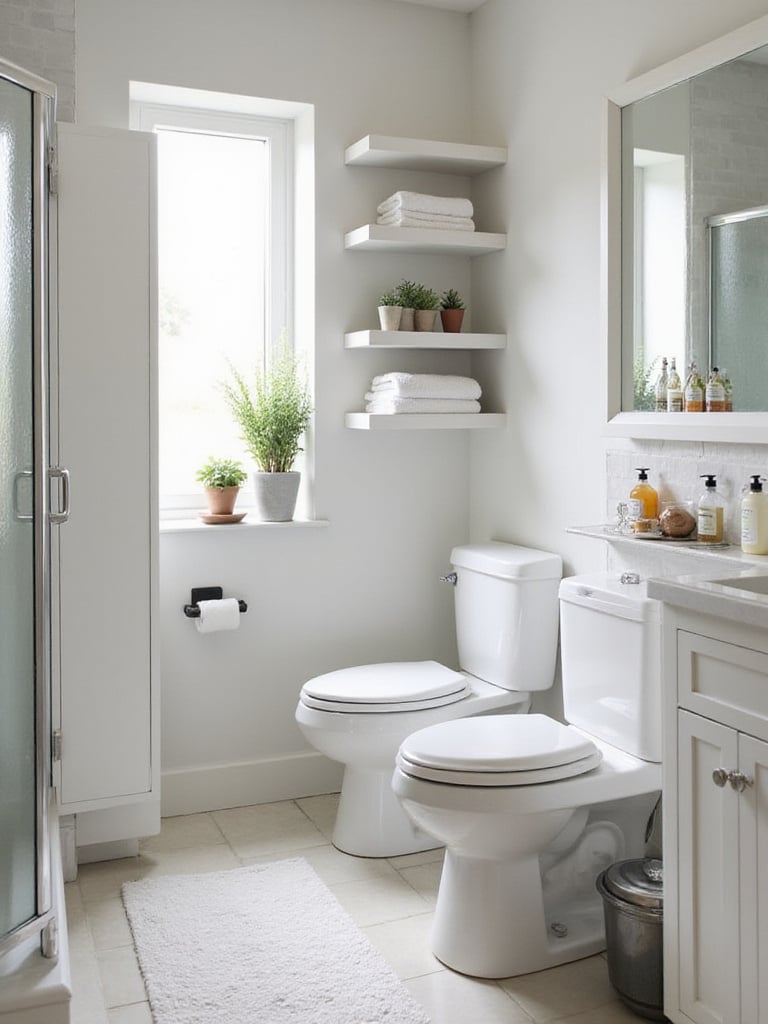
What’s working for families I’ve been helping lately?
The goal is to strike that delicate balance: kids can independently grab their own toys and towels, but medications and cleaning sprays are high up or secured with childproof locks.
If you have the space, a walk-in shower is an incredible asset in a family bathroom. With no curb to step over, it’s accessible for everyone—from a wobbly toddler to a visiting grandparent. And frankly, it just makes bath time easier. You can sit on a stool or bench right outside the spray and help with hair-washing without getting completely soaked yourself.

When designing one for a family, a few features are non-negotiable. An adjustable-height handheld shower wand is a must. A built-in bench is a lifesaver. And of course, non-slip flooring is paramount. I also push for thermostatic shower controls, like Grohe’s CoolTouch technology, which ensures the faucet body never gets dangerously hot. It’s a little detail that provides huge peace of mind.
There’s no denying the visual impact of a freestanding tub. It feels luxurious. But for families, it’s also surprisingly practical. You can access it from all sides, which means no more leaning awkwardly over a wide tub edge to wash your child’s hair. They’re also typically deeper, which means more room for splashing and imaginary submarine adventures.
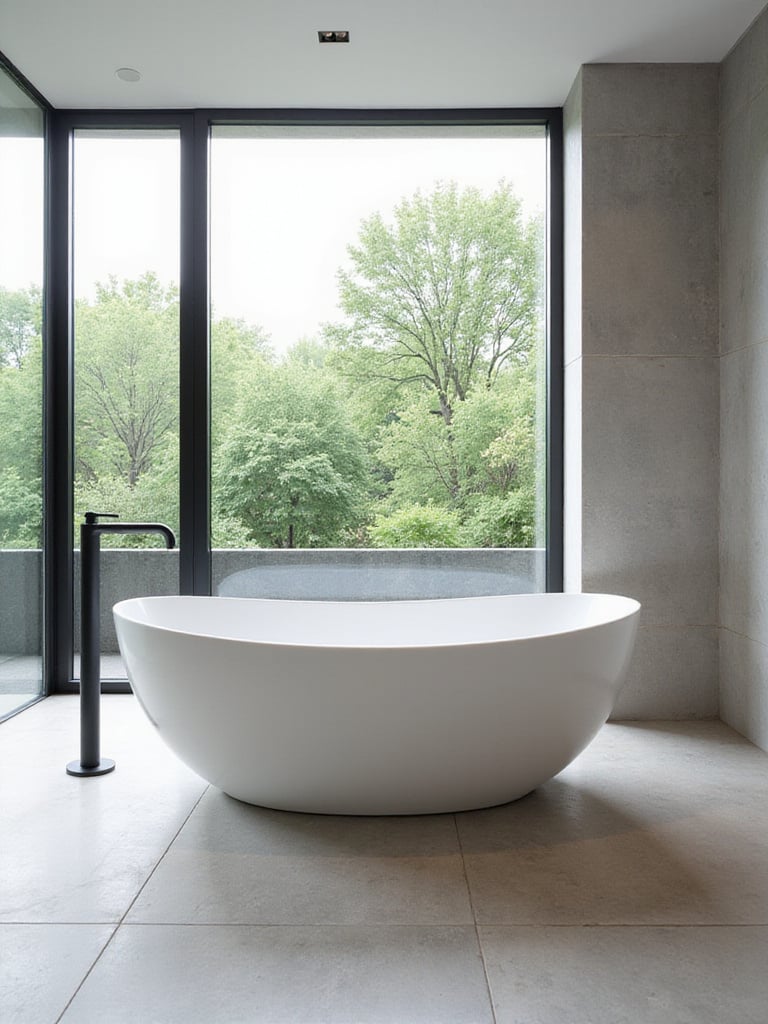
The main hesitation I hear from parents is, “Isn’t it a pain to clean behind?” And honestly, yes, it can be if you don’t plan for it. You need to ensure there’s enough clearance around it to easily run a mop. Material matters, too. Acrylic is warmer to the touch for little bodies, while a solid composite material will stand up better to being bonked by a rogue toy boat. For me, the extra clean-up is worth the trade-off for turning a daily chore into a joyful ritual.
Tile is a fantastic way to inject personality that will last for years. And it can be educational! Forget boring beige. What about a floor with a bold honeycomb pattern? Or a band of penny tiles in a rainbow of colors running at your child’s eye level? You can find tiles with numbers, letters, or animals that can spark conversations and learning during a long bath.
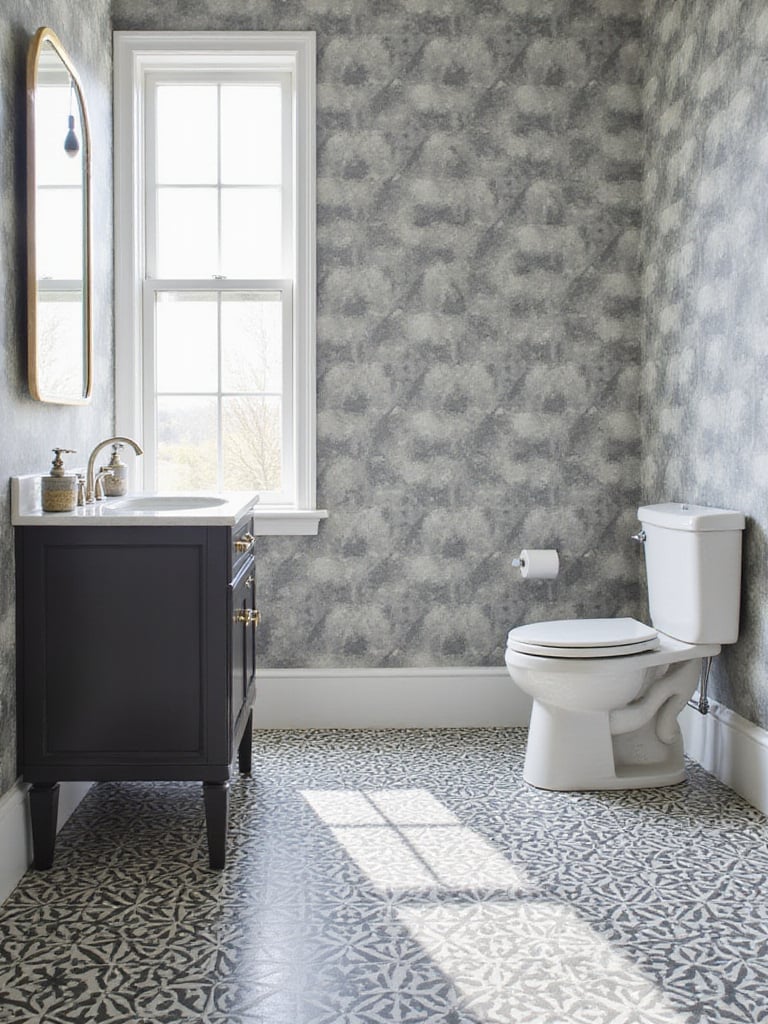
A designer secret? You don’t have to tile the whole room in a busy pattern. In fact, please don’t. Use it strategically. A “rug” of patterned tile on the floor in front of the vanity can define the space beautifully. A feature wall in the shower adds drama without overwhelming. A small-scale pattern on the floor is also brilliant at hiding dust bunnies and water spots between cleanings—a major win for busy parents.
Bathrooms can easily feel cold and clinical with all their hard, shiny surfaces. Wood is the perfect antidote. It adds warmth, texture, and a connection to nature that is incredibly grounding for kids. And before you panic about wood and water, let me reassure you.
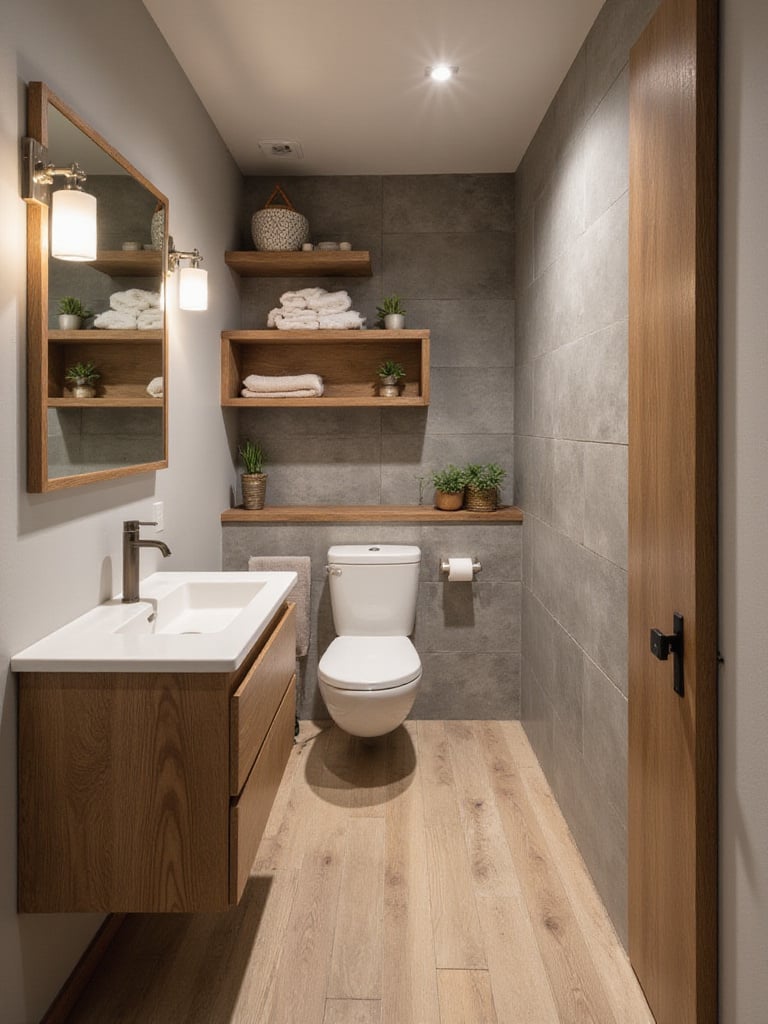
Certain woods, like teak or cedar, are naturally resistant to moisture and mold. A teak bath mat feels incredible underfoot and adds a spa-like touch. Bamboo is a wonderfully sustainable and durable choice for toothbrush holders or storage canisters. The key is to choose the right type of wood or to ensure it’s properly sealed for a bathroom environment. A simple wooden stool isn’t just a helper for reaching the sink; it’s a piece of nature in the room.
Of course, a mirror is a practical necessity. But it can do so much more! A large mirror is the oldest trick in the book for making a small bathroom feel bigger and brighter. But for kids, a mirror is also a tool for discovery. It’s where they learn to recognize themselves, practice making funny faces, and gain the coordination to brush their own teeth.
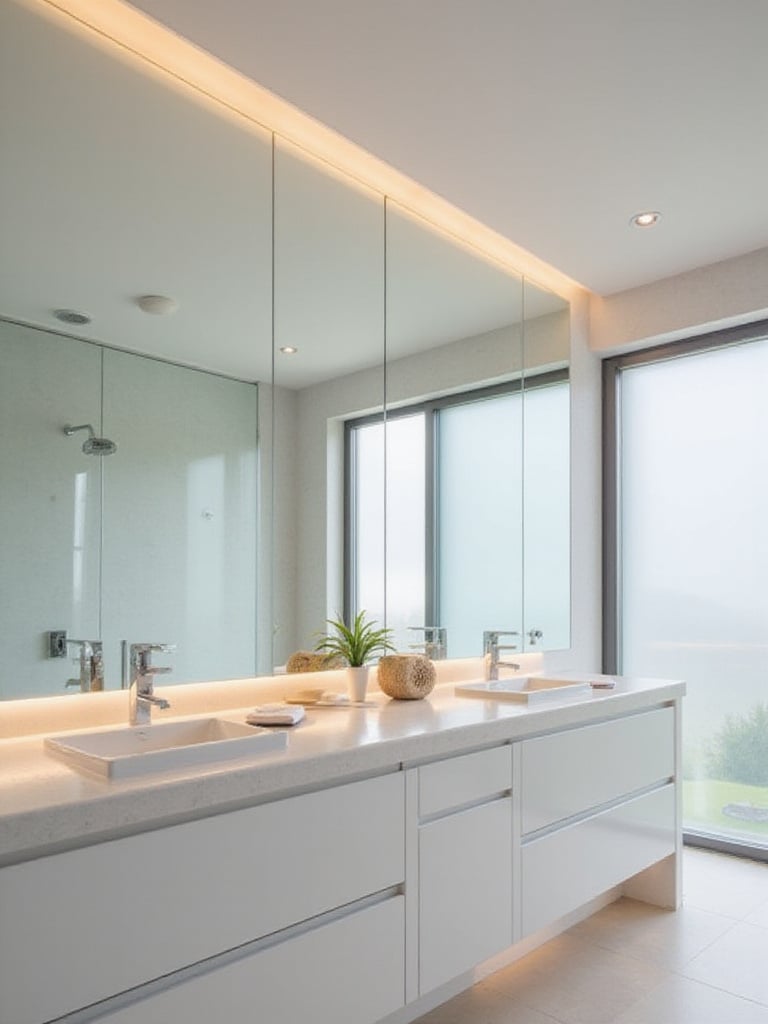
So, why stick with one boring rectangle? Consider a collection of smaller, round mirrors to create a fun, bubbly effect. Or find a mirror in a whimsical shape, like a cloud or a star. Just make sure any mirror a child can reach has rounded corners or a soft frame and is mounted securely to the wall. This is a place where you can be both playful and practical.
If you’re not ready for a big renovation, changing your fixtures—the faucet, showerhead, and cabinet pulls—is one of the most impactful updates you can make. And the market for kid-friendly fixtures has gotten so much better. You can now find faucets with built-in temperature indicators that glow blue for cold, purple for warm, and red for hot. What a simple, brilliant way to teach water safety!
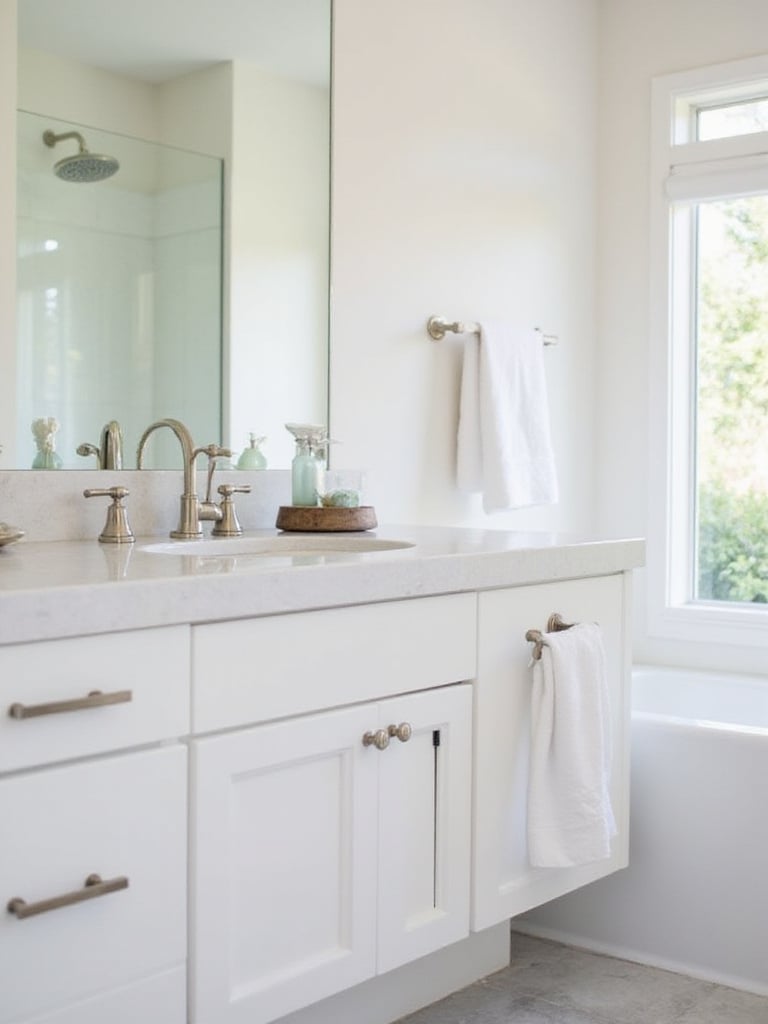
Look for lever-style handles, which are much easier for small, less-coordinated hands to operate than round knobs. Extendable faucet attachments are also great for helping little ones reach the stream of water without having to climb precariously on the counter. These small changes can make a huge difference in fostering independence and safety.
A plant can instantly breathe life into a bathroom. The humid environment is a perfect home for varieties like pothos, snake plants, and ferns. For children, having a living thing in the room is a wonderful, gentle introduction to caring for nature. You can give them the “job” of helping you water it once a week.
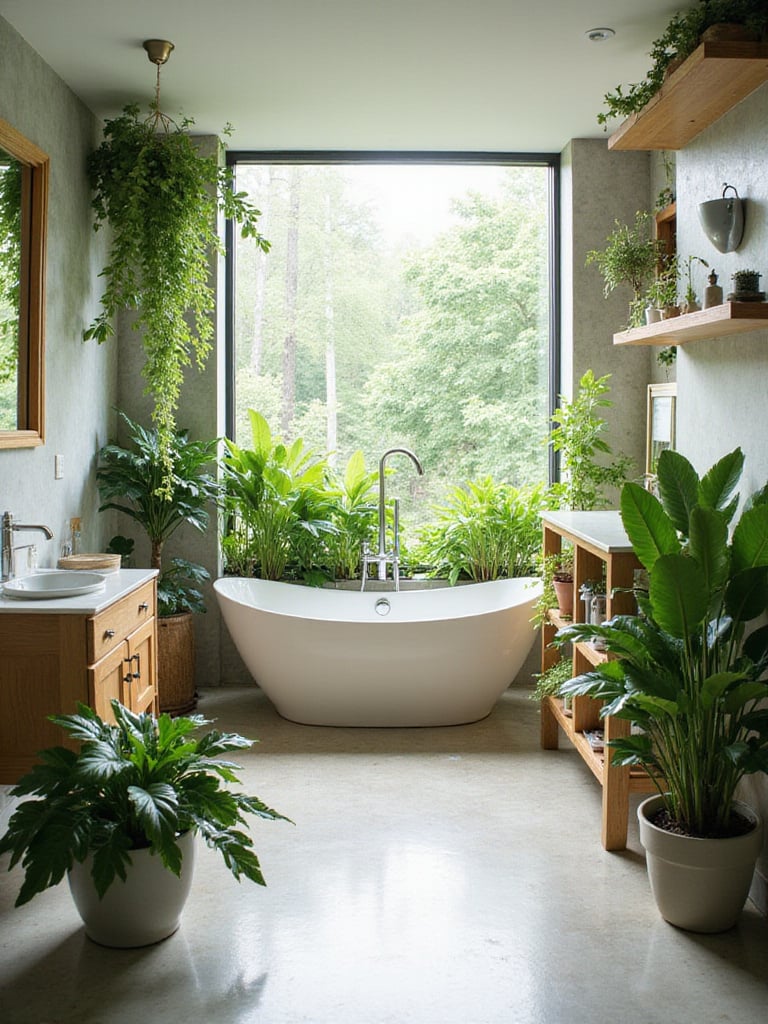
The key is placement and selection. Always choose non-toxic plants, just in case a curious toddler decides to take a bite. And place them on a high shelf or in a hanging planter, well out of reach of tiny hands that might want to pull them down. The pop of green against your tile or wall color is just an added bonus.
A wet room—where the shower area is open to the rest of the bathroom and the whole floor is waterproofed and sloped to a drain—is the ultimate solution for family-friendly bathing. There are no doors to swing open, no curtains to get moldy, and no shower curb to trip over. It creates a seamless, open space that’s incredibly easy to clean.
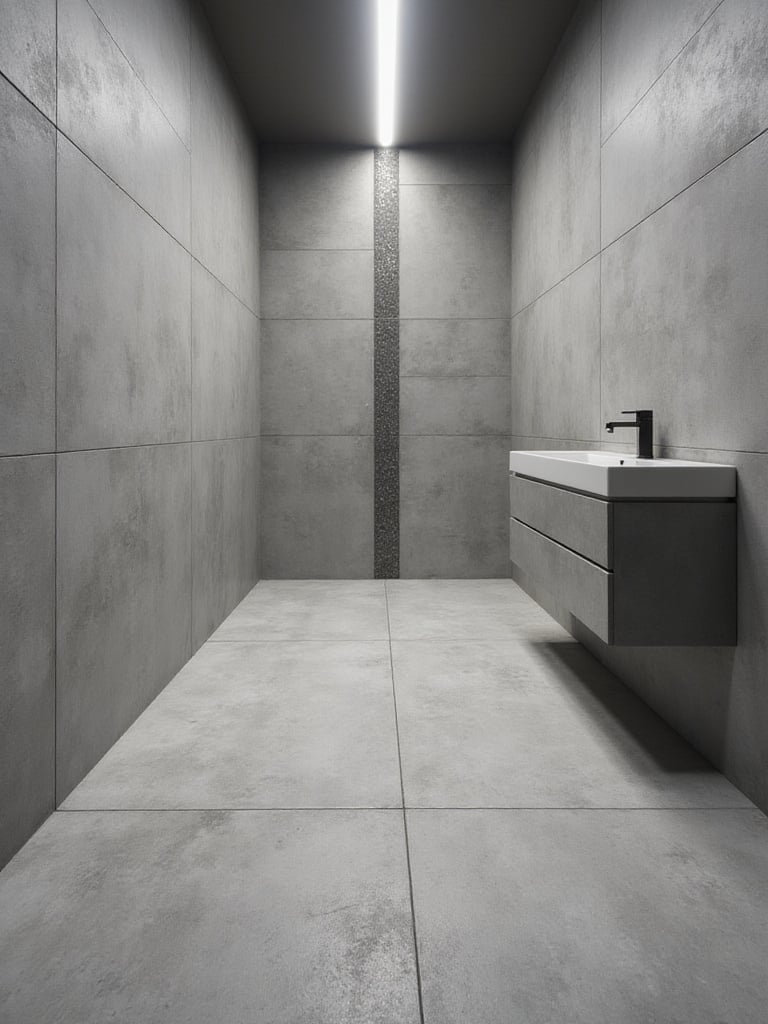
I know some people worry about water getting everywhere. And if you’ve had a bad experience, I get it. But with proper design—a gentle slope, a great drain, and maybe a strategic glass panel—you can contain the splash while keeping the open feel. This is especially great for bathing multiple kids at once or for creating a space that feels flexible and adaptable as your family grows.
The old rule that all your metals have to match is officially dead. Thank goodness! Mixing metals adds a layer of depth and personality to a bathroom. And practically speaking, it can be really smart. Maybe you use a durable, fingerprint-resistant brushed nickel for the high-traffic faucet but choose a warmer, unlacquered brass for the light fixture and mirror frame.
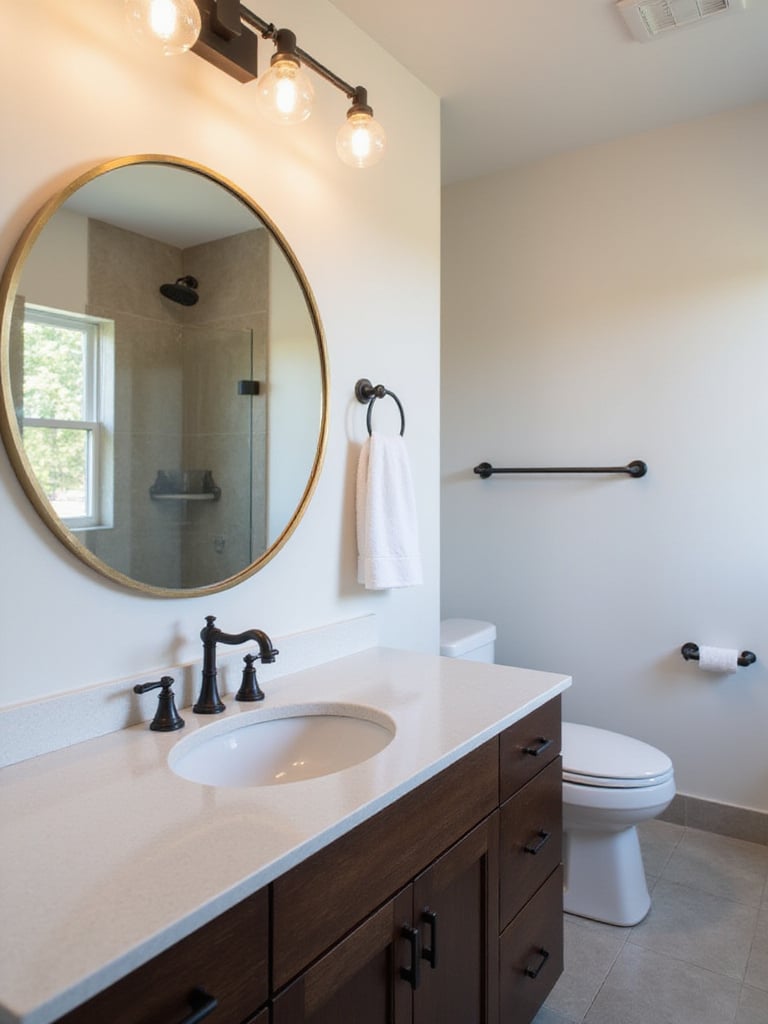
The trick is to be intentional about it. I usually recommend sticking to two, maybe three, metal finishes to keep it from looking chaotic. And make sure each metal appears at least twice in the room to create a sense of cohesion. For instance, if you have a brass light fixture, echo that with brass cabinet pulls. It feels collected and thoughtful, not accidental.
I know what you’re thinking: “Open shelves? In a kid’s bathroom? Are you crazy?” Stay with me here. When done right, open shelving can be both beautiful and functional. It forces you to be organized, and it’s a great way to put beautiful, everyday items on display.
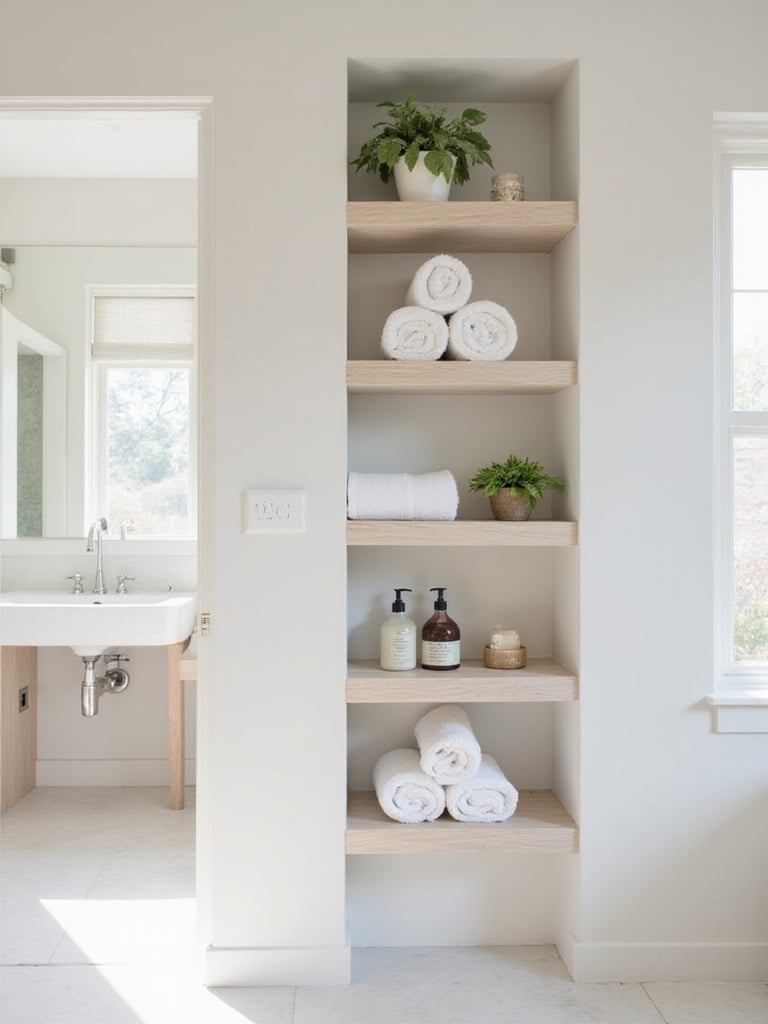
Think colorful, folded towels, a beautiful basket holding bath toys, or a collection of shells from your last family vacation. The key is curation. Lower shelves should hold things you want kids to be able to access themselves, like their bath towels or a basket of rubber ducks. Higher shelves are for decorative items, extra supplies, or that beautiful glass jar of bath salts that is just for you.
A floating, or wall-mounted, vanity is one of my go-to solutions for family bathrooms, especially smaller ones. Lifting the cabinet off the floor has two huge benefits. First, it creates an uninterrupted line of sight, which tricks the eye into seeing the room as larger. Second, and maybe more importantly, it makes cleaning the floor a thousand times easier. No more dust bunnies hiding in awkward corners!
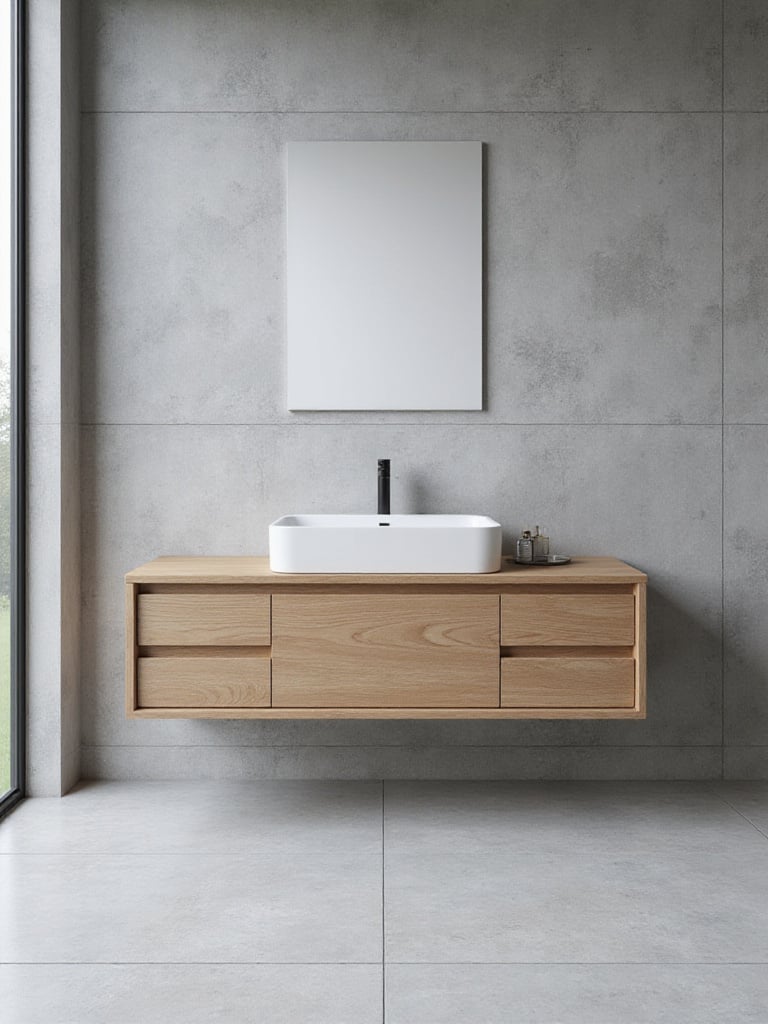
For kids, that space underneath is the perfect parking spot for their step stool, keeping it out of the main walkway when it’s not in use. As with any vanity, look for durable finishes and soft-close drawers, but the airy, spacious feeling a floating vanity provides is a real game-changer.
Technology in the bathroom shouldn’t be about gimmicks; it should be about making things safer, easier, and more efficient. Think about a Bluetooth speaker for playing calming music (or baby shark, let’s be real) during bath time. Or a smart mirror that can display a two-minute tooth-brushing timer.
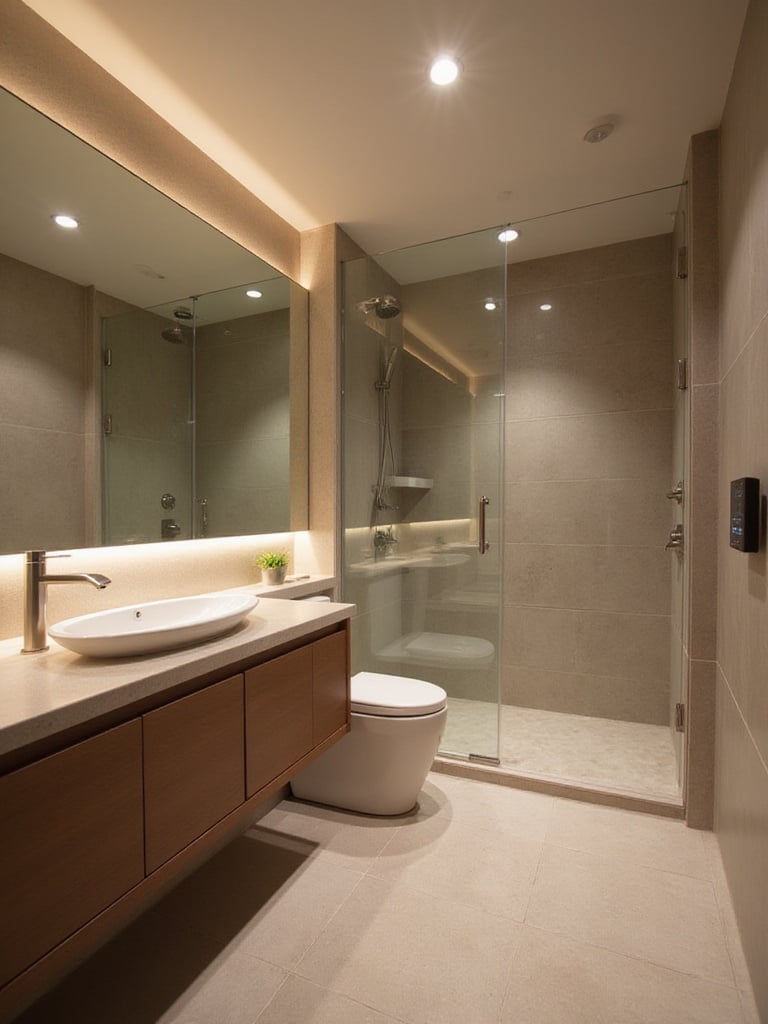
Some of the best “smart” features are the simplest. We’ve already talked about motion-sensor nightlights and digital temperature displays on faucets. There are also shower heads that can be programmed to a specific temperature and flow rate for each family member. The goal is to use technology to support healthy habits and independence, not to add another complicated device to your life.
A small family bathroom is a design puzzle, but it’s one that can absolutely be solved. Every single inch counts. Pocket doors are a hero here, as they don’t require any swing space. A corner sink can free up a surprising amount of floor space. And a tub-shower combo with glass sliding doors often feels more spacious than one with a shower curtain.

The key is to think in zones. Can you arrange the layout so that one person can be brushing their teeth while another is using the toilet with a degree of privacy? Think about traffic flow. Can two people pass each other without turning sideways? It often means prioritizing function and flexibility above all else, using things like wall-mounted toilets and narrow, vertical storage to maximize every square foot.
Even if it’s just a small corner of the vanity, creating a dedicated spot for grooming can help bring order to the morning rush. This is where you can really lean into that “grow-with-me” philosophy. For a toddler, this spot might just have their toothbrush, toothpaste, and a cup, all at a height they can reach.
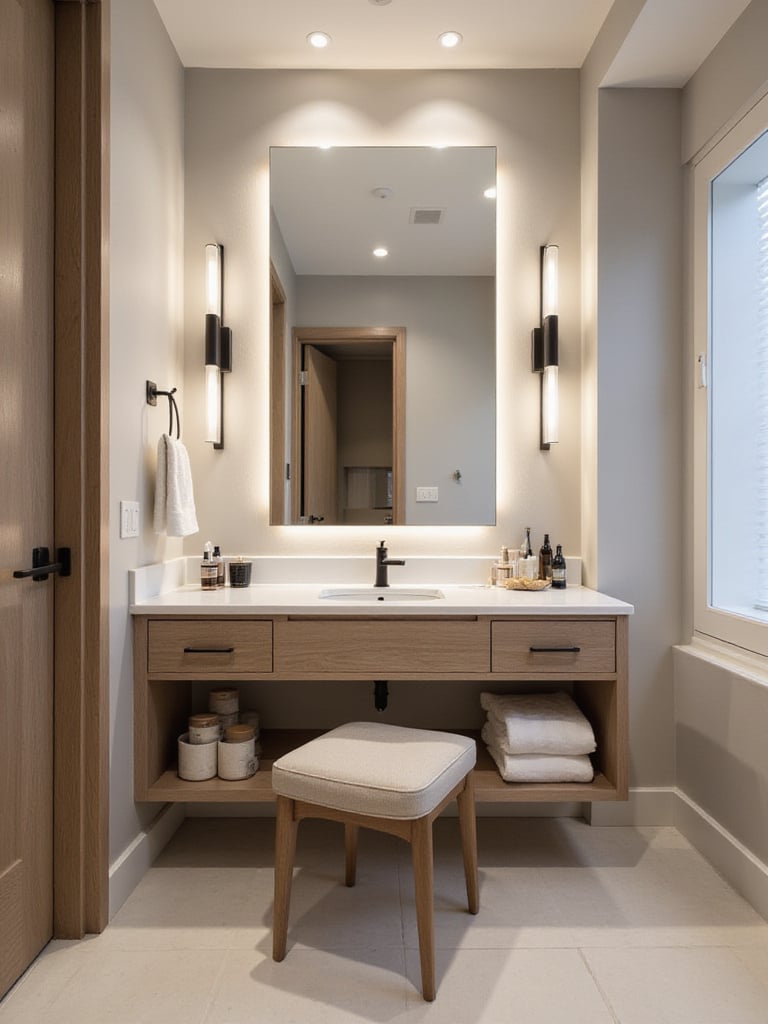
As they grow, the space can adapt. You might add a spot for hairbrushes, detangling spray, and eventually, their own face wash or deodorant. Having a designated place for these items teaches organization and fosters a sense of independence in their self-care routines. And it keeps their sticky toothpaste tubes from migrating all over the counter. A small victory, but a victory nonetheless.
Please, don’t let your bathroom be devoid of personality! This is the perfect place to have a little fun. Frame a piece of your child’s artwork—just make sure it’s in a well-sealed frame to protect it from humidity. A playful shower curtain can set the whole tone for the room, whether it’s a world map, a field of dinosaurs, or a sophisticated botanical print that you love.
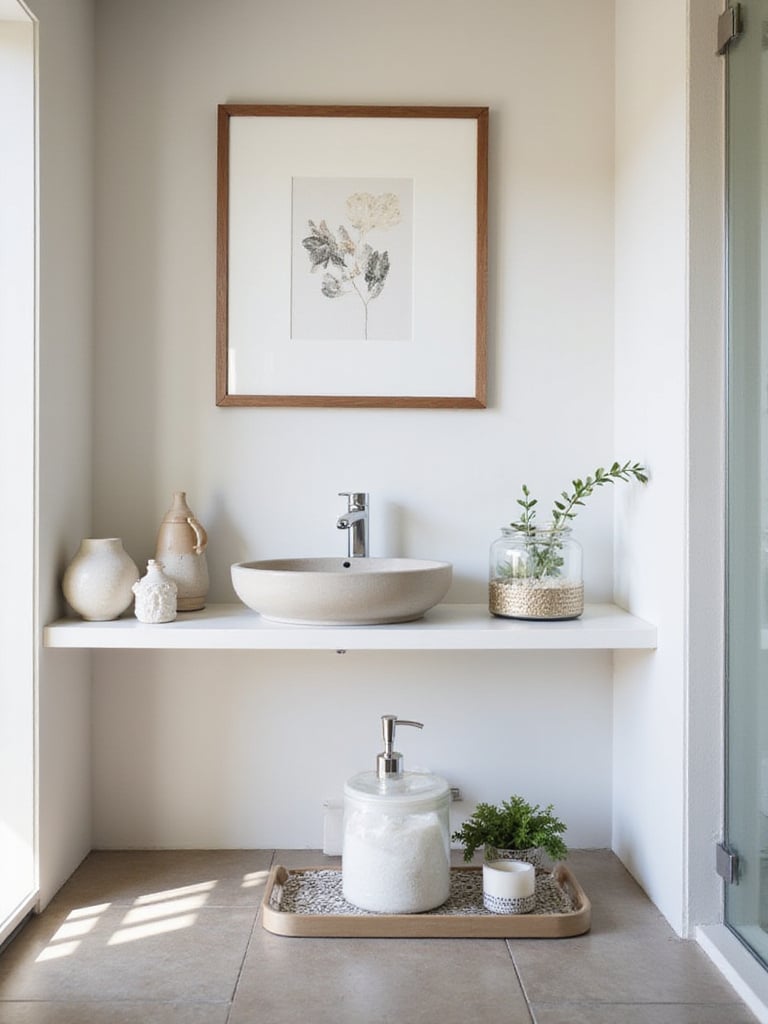
Accessories are your friend here. A quirky soap dish, colorful towels, a fun bath mat. These are the low-cost, low-commitment items that make the space feel like yours. They tell the story of the people who live there. And involving your kids in choosing some of these final touches is a wonderful way to make them feel like the space belongs to them, too.
Our homes are our first classrooms, and the bathroom is a powerful place to teach kids about conservation and sustainability. Making eco-friendly choices doesn’t have to be complicated. Start with a low-flow toilet and showerhead. These days, they work incredibly well and can save a tremendous amount of water over time—a very tangible lesson for kids.
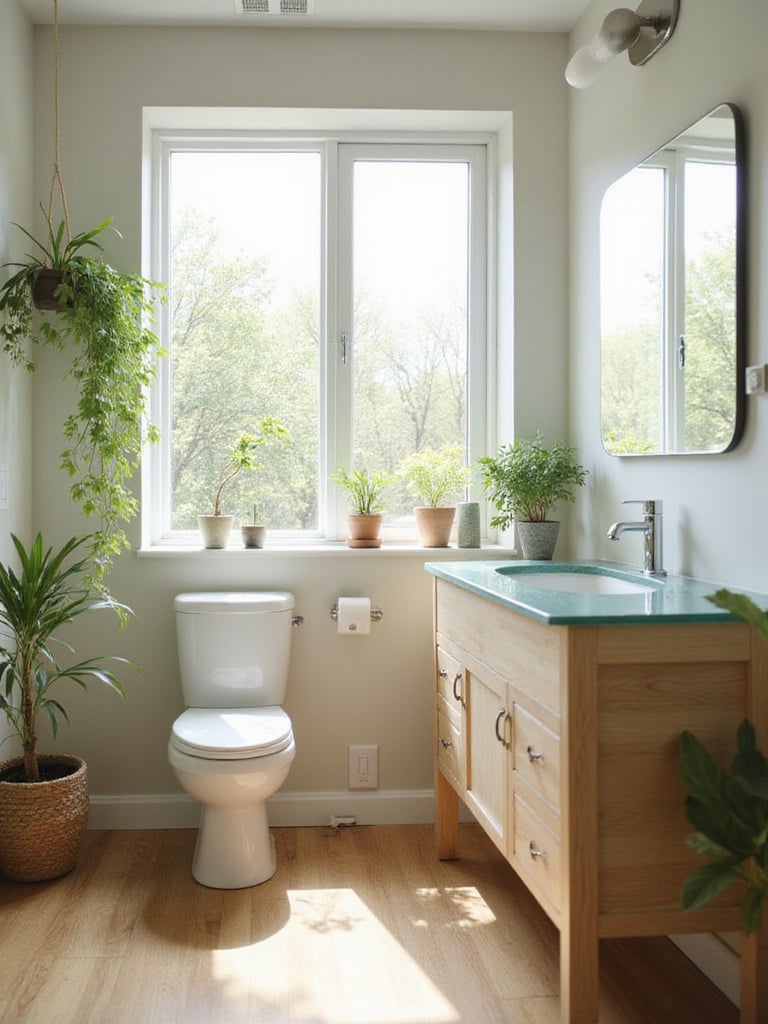
Choose towels made from organic cotton, or a shower curtain made from hemp instead of vinyl. Use refillable dispensers for soap and lotion to cut down on plastic waste. When you make these choices, talk to your kids about why. Explaining that “we choose this soap because it comes in a glass bottle we can use over and over” plants seeds of environmental responsibility that will grow with them.
We touched on layers, but accent lighting deserves its own moment. This is the lighting that adds a touch of magic. Think a waterproof LED strip tucked under the edge of a floating vanity, casting a soft, downward glow. Or small spotlights aimed at a beautiful piece of art or the plants on your shelf.
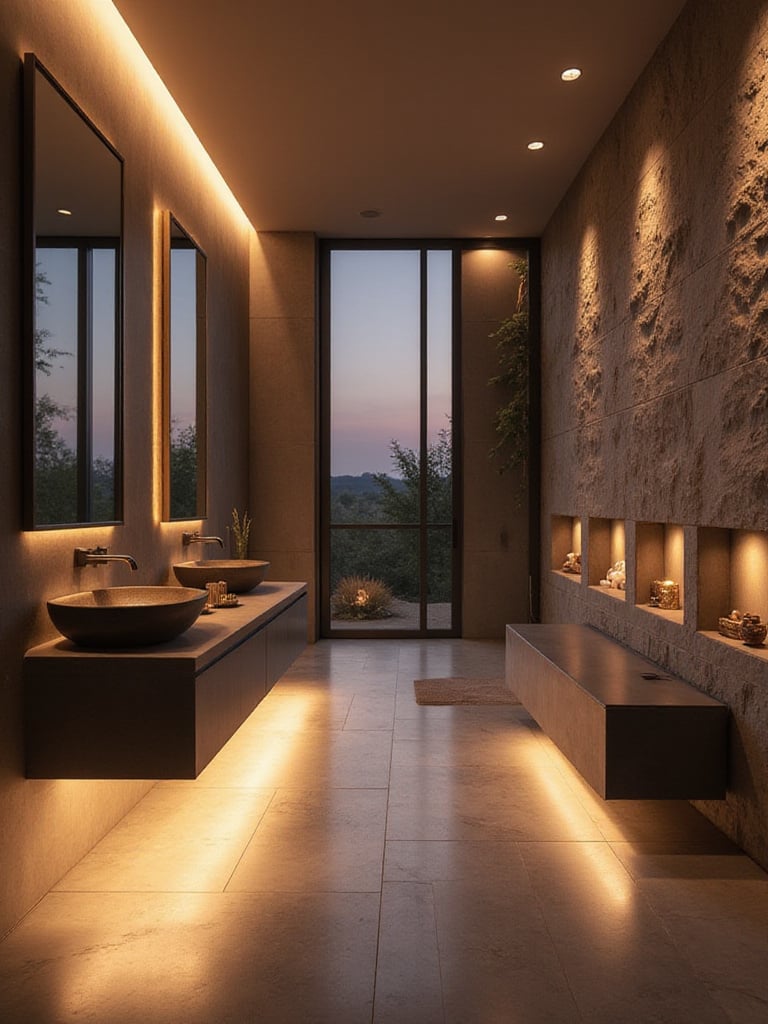
For children, this kind of lighting can transform the room. Color-changing LED lights in the shower can make bath time feel like a disco party or a calming blue lagoon. A soft, warm light behind the mirror can serve as the perfect nightlight. This layer of lighting isn’t about seeing; it’s about feeling. It’s what shifts the space from purely functional to truly special.
In the end, creating a bathroom that serves your entire family isn’t about achieving some impossible standard of perfection from a magazine. It’s not about hiding the evidence that children live there. The most successful and beautiful family bathrooms I’ve ever designed are the ones that embrace the joyful, messy reality of life and build a supportive, stylish space around it.
Remember that this room needs to evolve. The bathroom that works for a family with a toddler will need to adapt as that toddler becomes a tween who craves privacy. By choosing flexible solutions, durable materials, and injecting your family’s unique personality, you can create a space that not only looks great but also nurtures independence, fosters connection, and grows right alongside your children. And that’s a design that will truly stand the test of time.